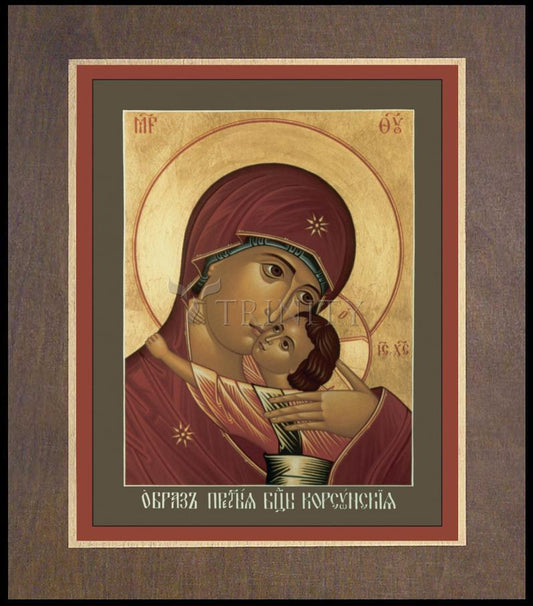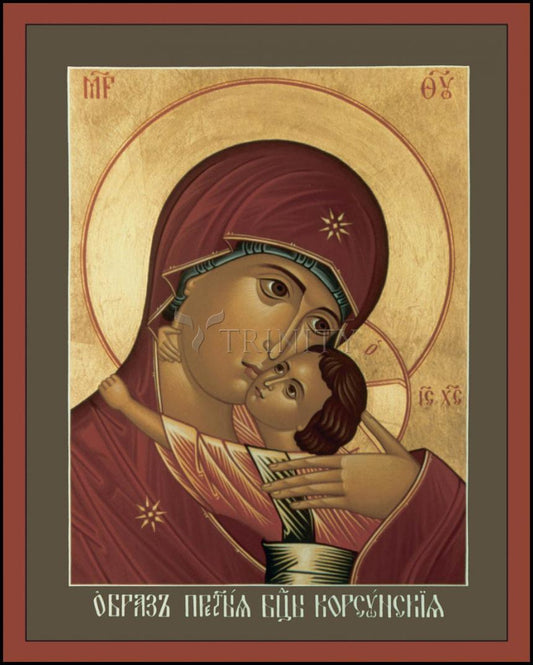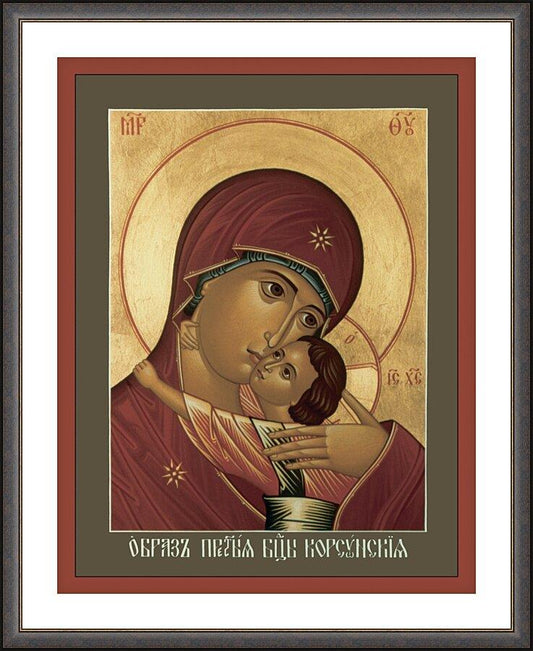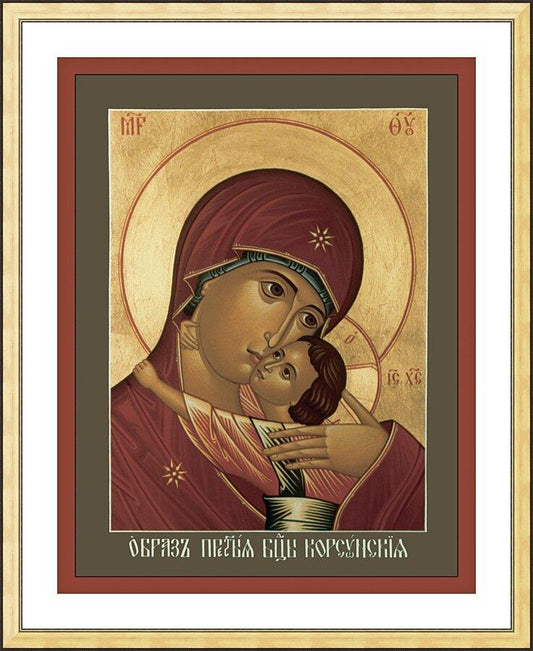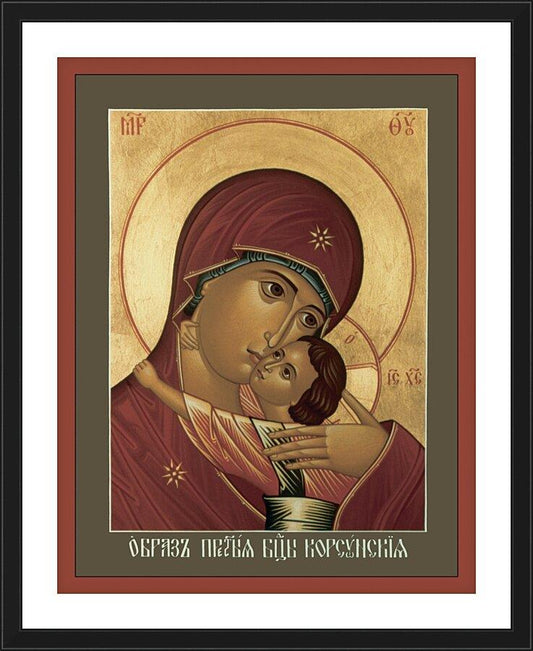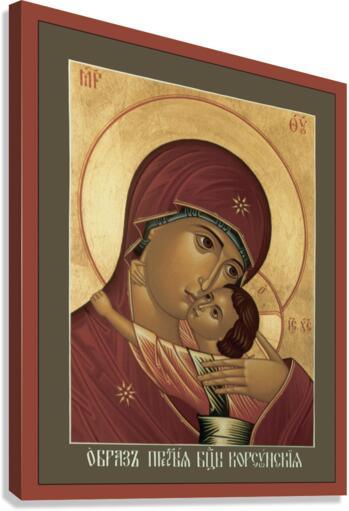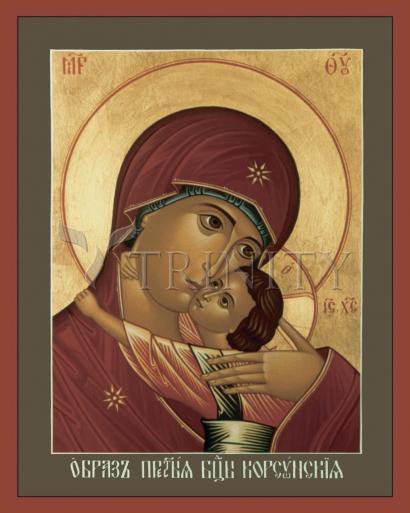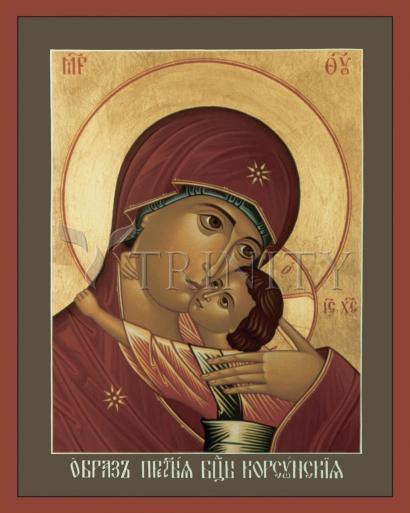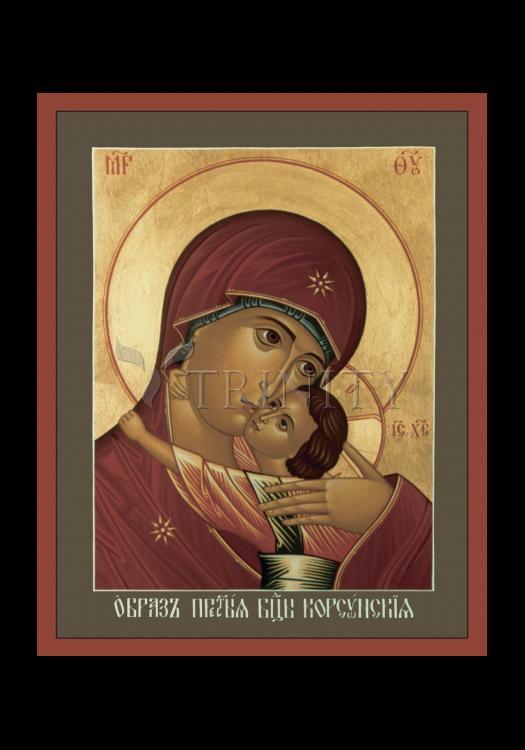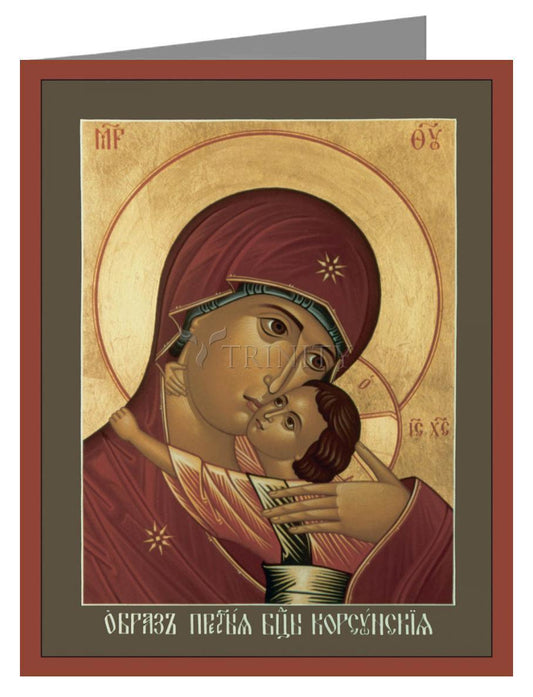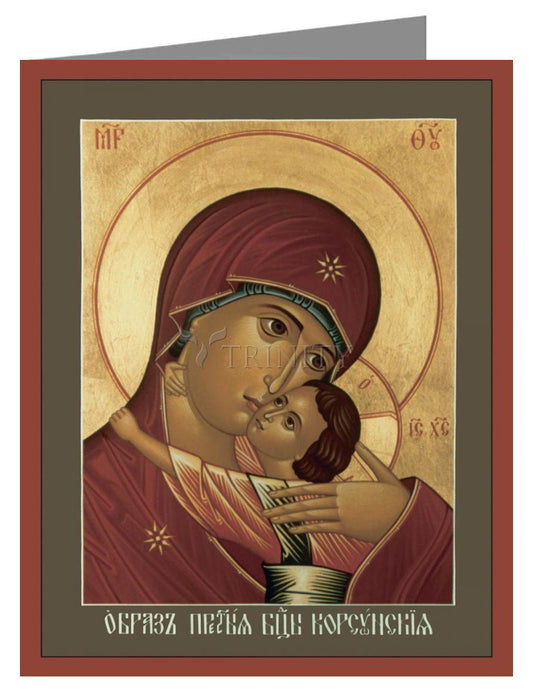ARTIST: Br. Robert Lentz, OFM
ARTWORK NARRATIVE:
The Greek letters in the upper corners of the icon are the abbreviations for "Mother of God." Those near Christ’s shoulders are abbreviations for "Jesus Christ." The stars on Mary’s forehead and shoulders refer to her being a temple of the Holy Trinity. The Church Slavonic inscription at the bottom of the icon reads, "The Icon of the Most Holy Mother of God of Korsun."
This iconographic pose of Mary and Jesus takes its name from the ancient Greek town of Korsun (Chersonesus), a port in the Crimea. Mary is always depicted in icons with the stars and wearing garments of these colors. The gold rays of Christ’s garments are indications of divine glory, even as a tiny child.
Read More
This image follows the iconographic type of the Virgin of Mercy (Eleousa) which is characterized by the melancholic and serious countenance of the Virgin who envisages the impending tragedy. She holds tenderly the child Jesus who is embracing her.
According to legend, St. Luke painted the prototype of this icon. There are two different stories regarding its entry to Russia. One story relates that the icon was brought by Great Prince Vladimir from Korsun (Kherson) on the Black Sea to Kiev in 988 AD. This gives this Icon the name (Korsun) from the ancient Greek town of Korsun (Chersonesus), a port in the Crimea peninsula.
An alternate story states that in 1173 AD, it was presented by Emperor Manuel Comnenus to Saint Efronsina of Polotsk. St. Efronsina installed the icon in the church of the Most Holy Mother of God at the cloister, which she had founded near Polotsk. In 1239, when Prince Alexander Nevskiy married the daughter of Prince Bryachislav of Polotsk, the young bride took the icon along with her for the wedding ceremony to the town of Toropets, where it remained until 1917. This shoulder-length Umilenie (Tenderness) image depicts the Mother of God and infant Christ in a "tender" cheek-to-cheek embrace.



